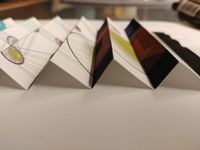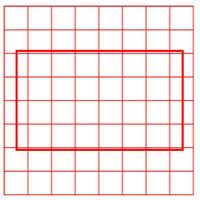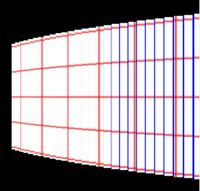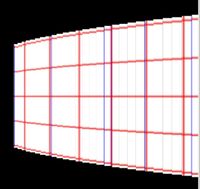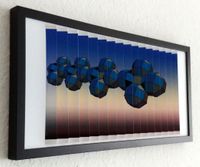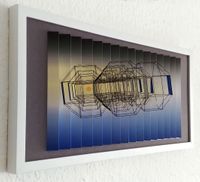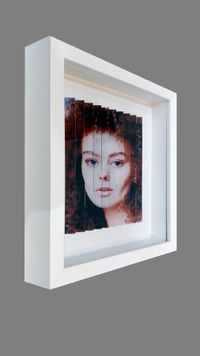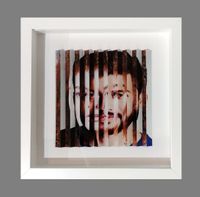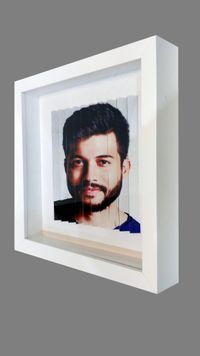Alternating double images
The alternating double image plays with the eye of the beholder. It consists of two images, depending on which side you look from, you see one image or the other. Although this technique of displaying images is very old - it dates back to the 18th century - the optical effect has lost none of its fascination to this day.
There are other variants such as the lamellar image, which can display three different images, and the lenticular technique, which, however, requires a special microlens film. I have worked exclusively with two-way images, but in my digital implementation I have taken into account special aspects such as eye focus *) and keystone correction *).
Focus of view : Asymmetrical widths of the image strips for optimum image perception from two special observation points. These two optimum observation points are located to the left and right of the center of the image with a viewing angle of 45 degrees. At these points, the viewed parts of the image merge seamlessly and without occlusion to form the original image. I usually use a viewing distance of one meter to calculate the alternating image geometry.
Keystone correction: Adjusted, successive enlargement of the parts of the image further away from the viewer so that no "jumps" of image lines occur at the borders of the image strips.
The effect of the corrections can be illustrated using the example of a picture on the right.
Also applies analogously to the other (left) image. Of course, all information only applies to the optimum viewing position (45 degrees)
Sample image with regular structure | Without corrections: | Focus view correction: | Plus keystone correction: |
Examples (Display alternating images by moving)
Wudrast
Worbit
The technique can also be used very well to display two private photos in one picture (with frame).
Other beautiful motifs that I have already realized are bridal couples, siblings or even two grandchildren.
Let me advise you without obligation!
